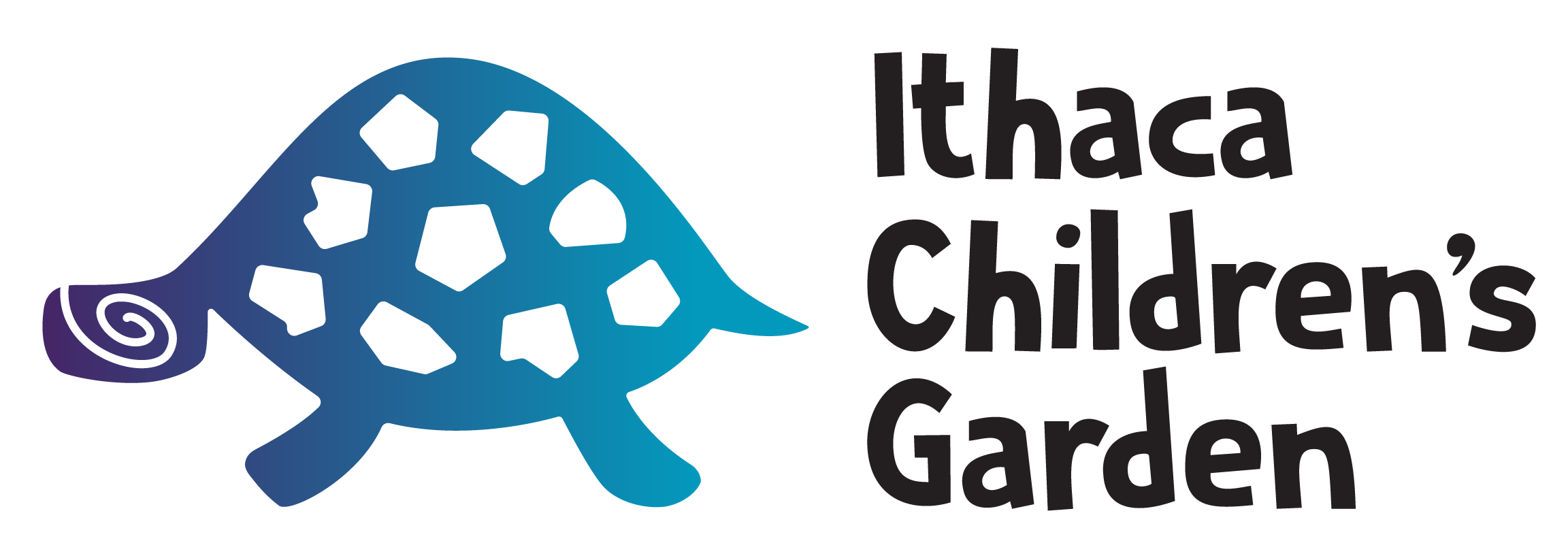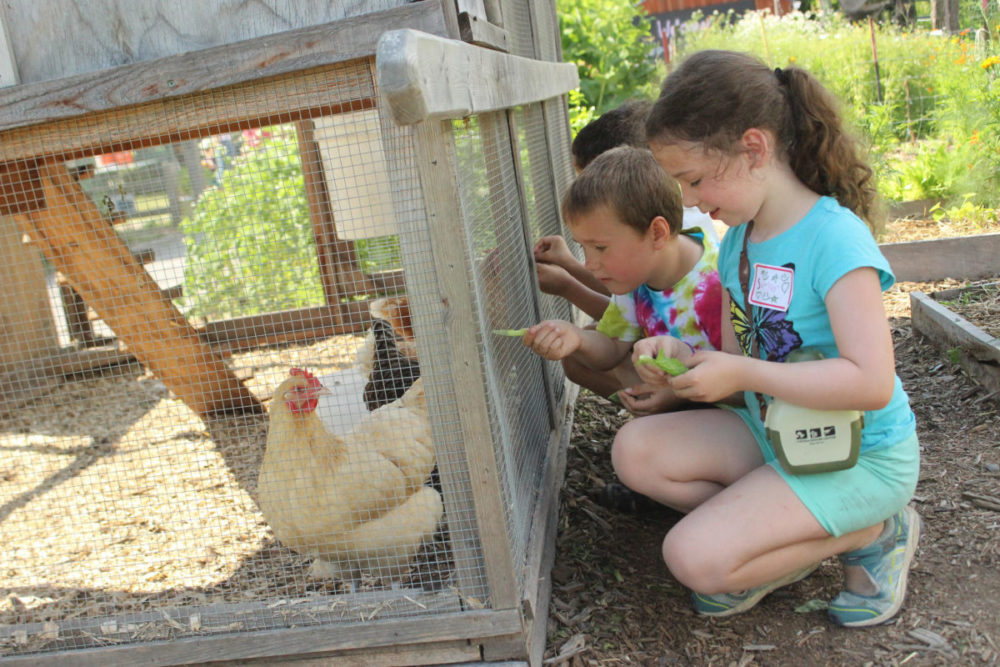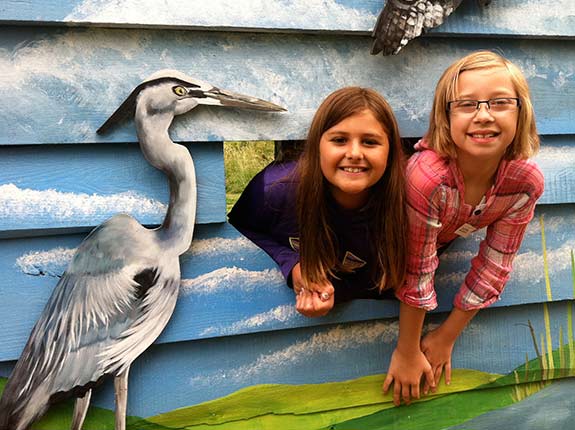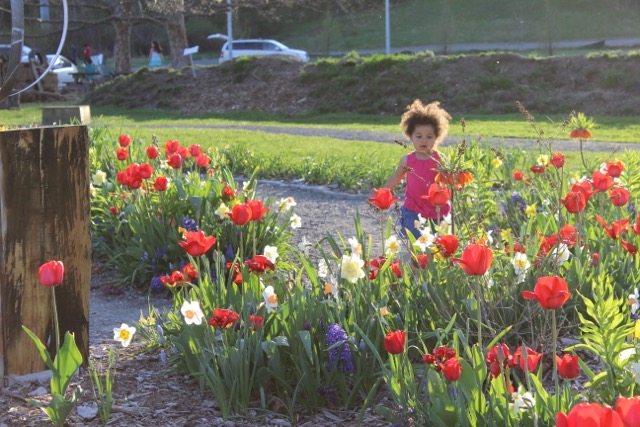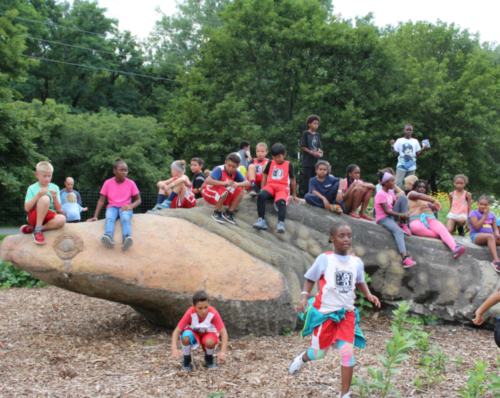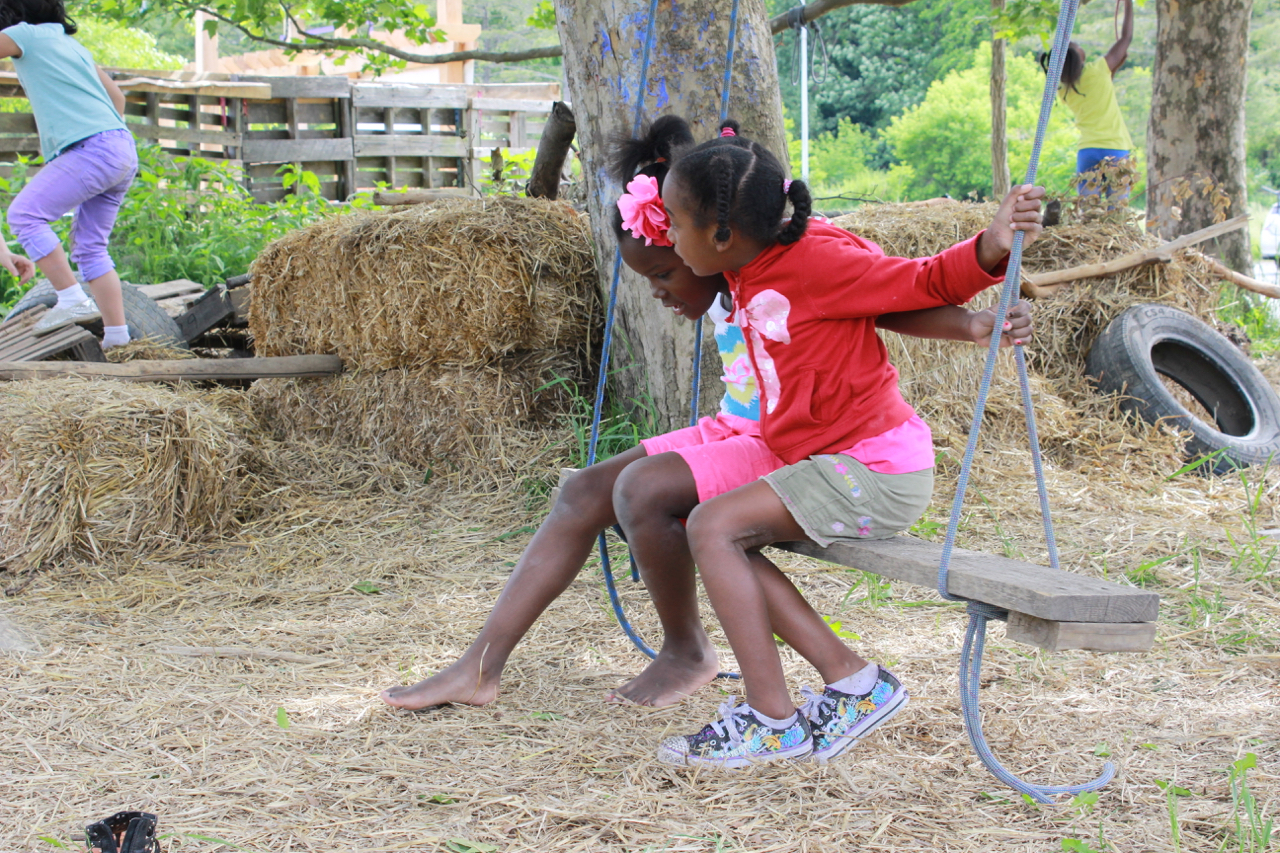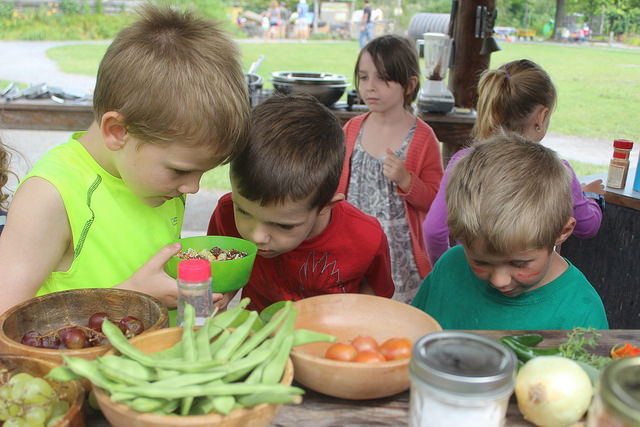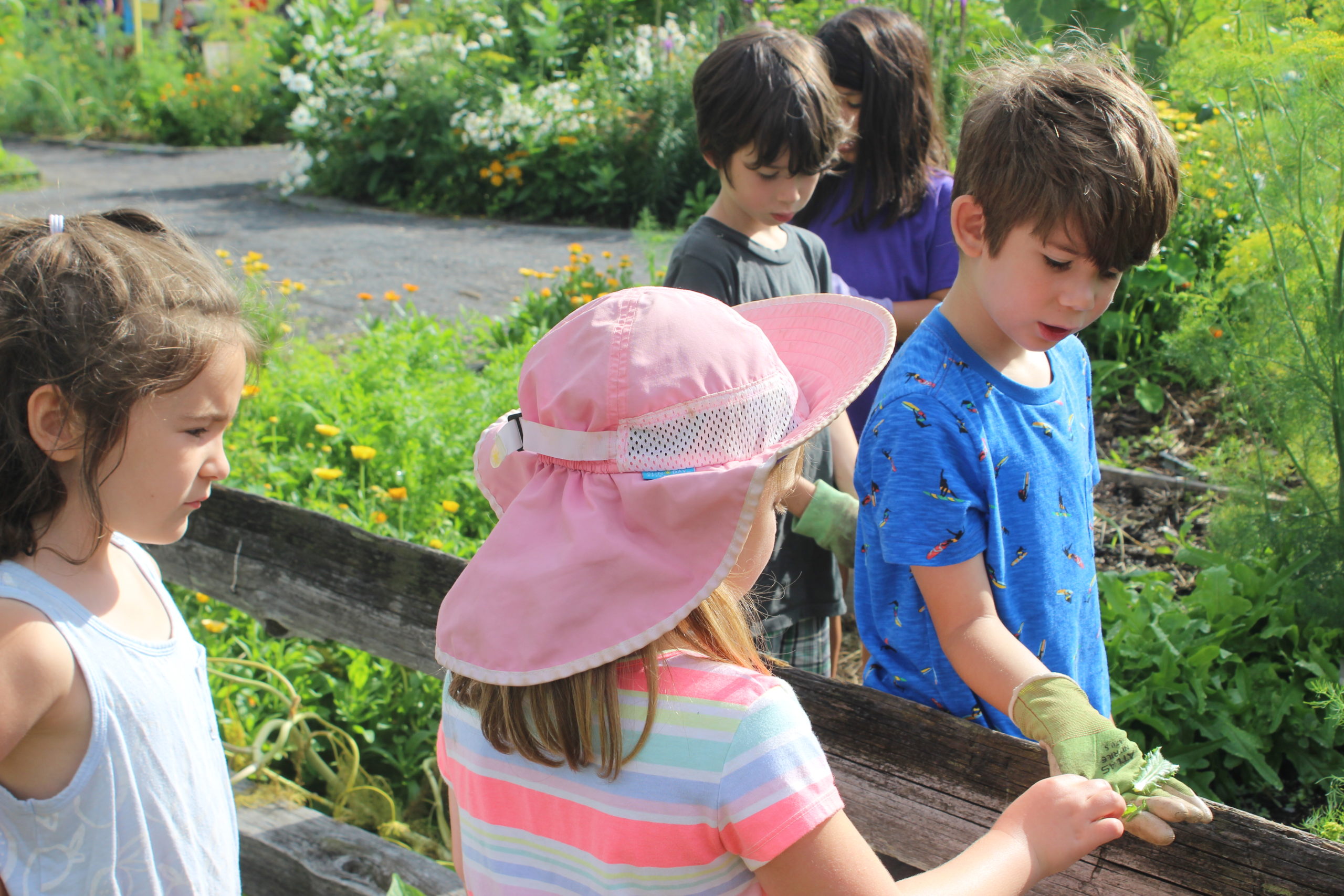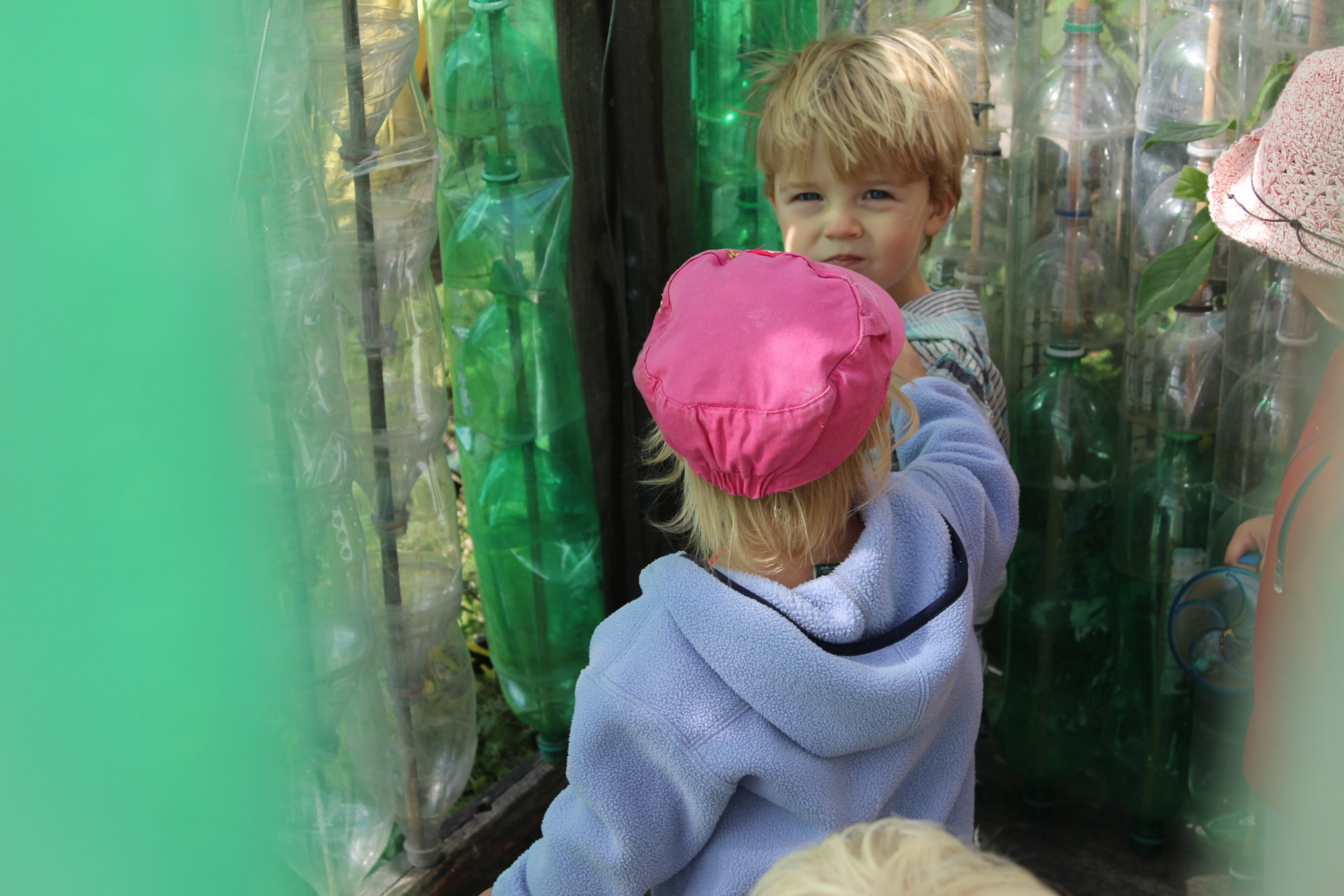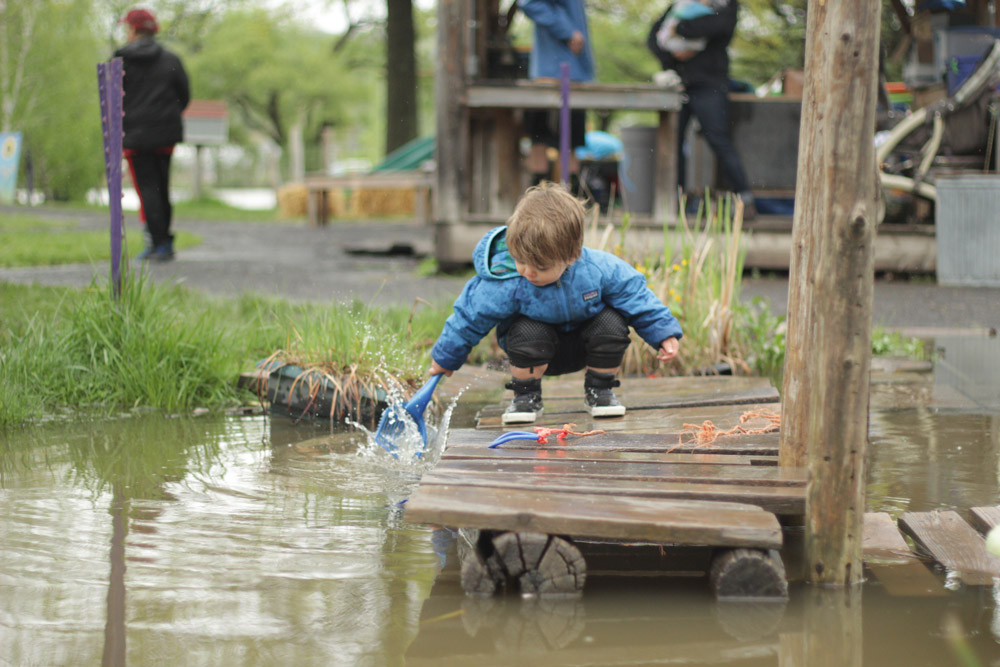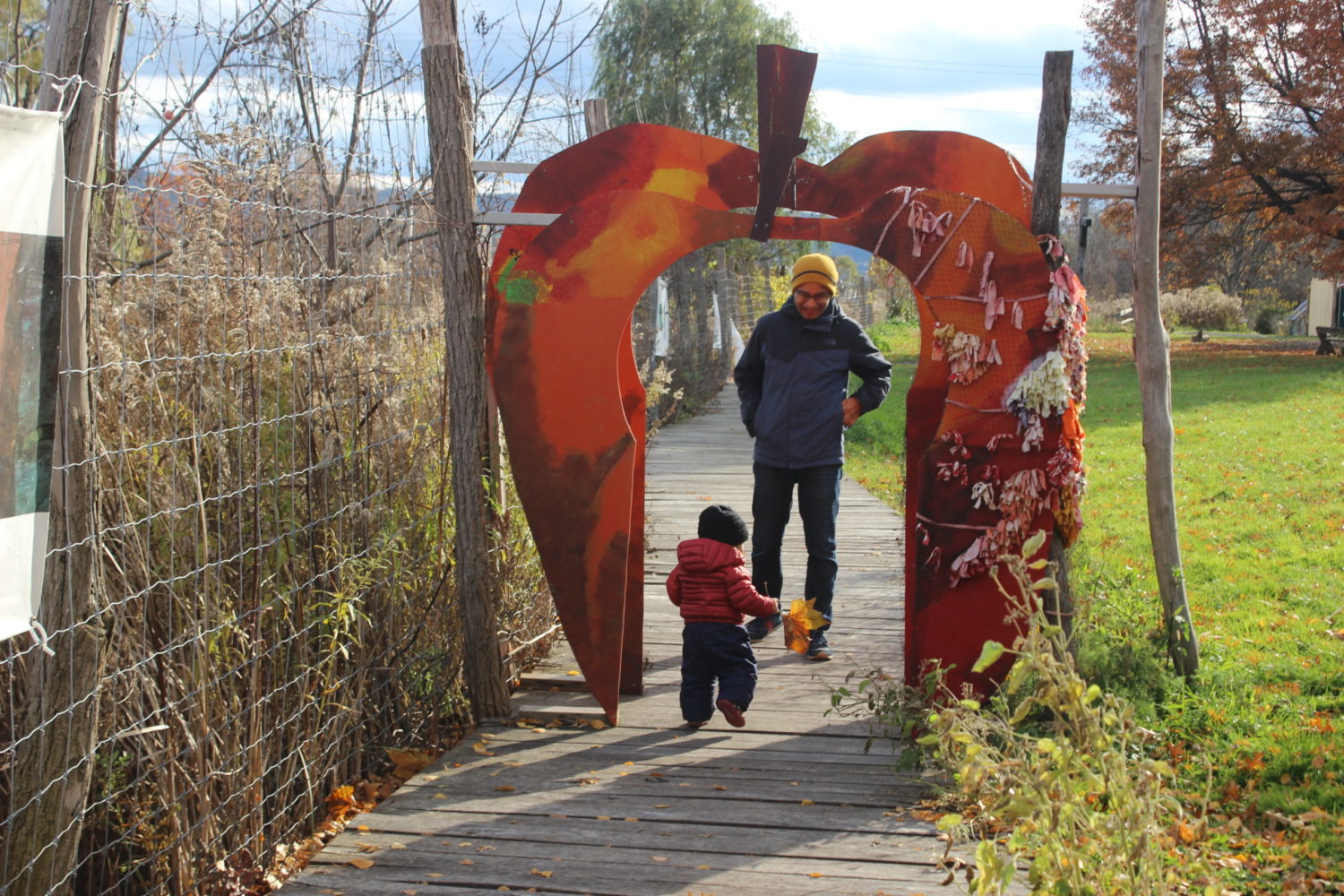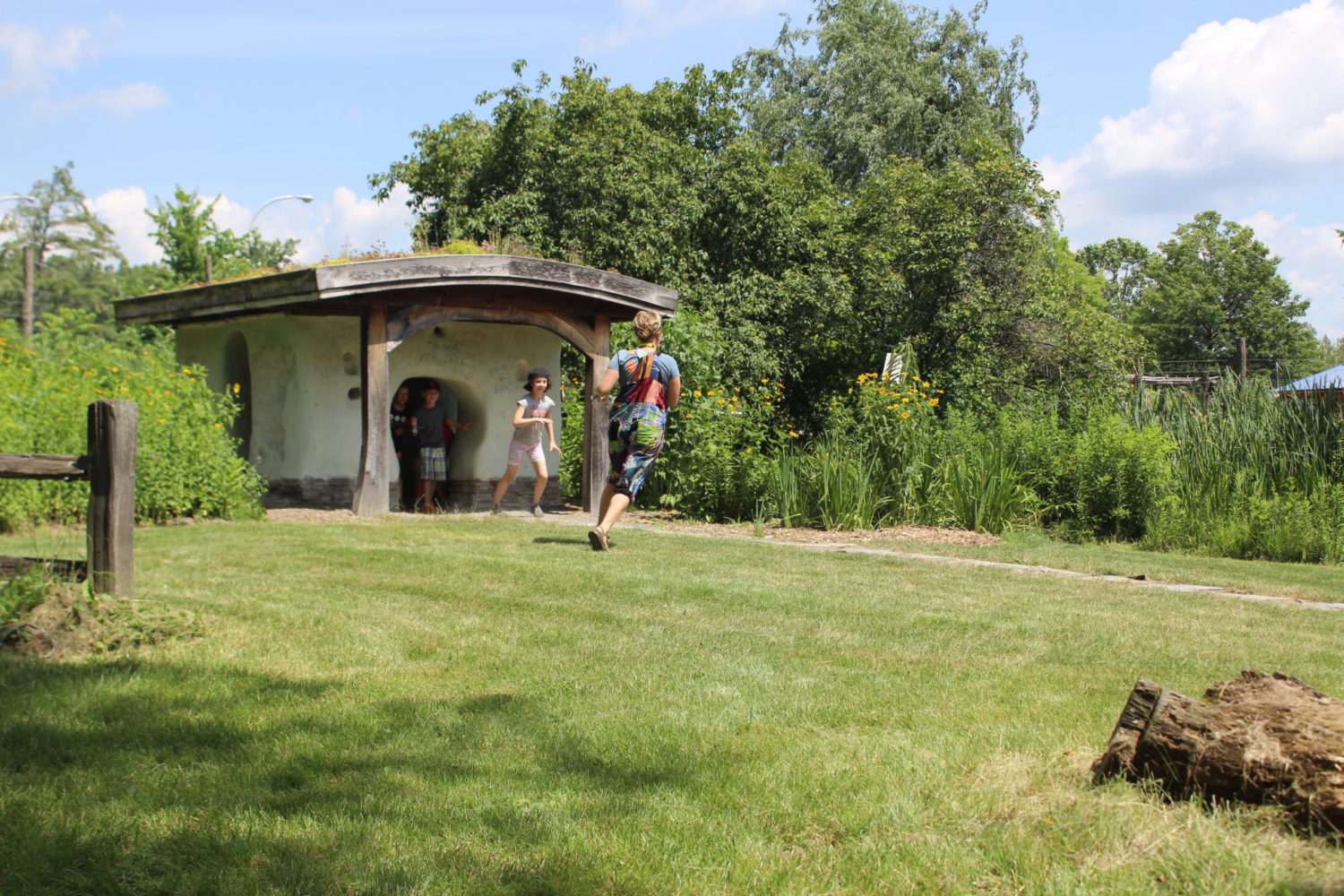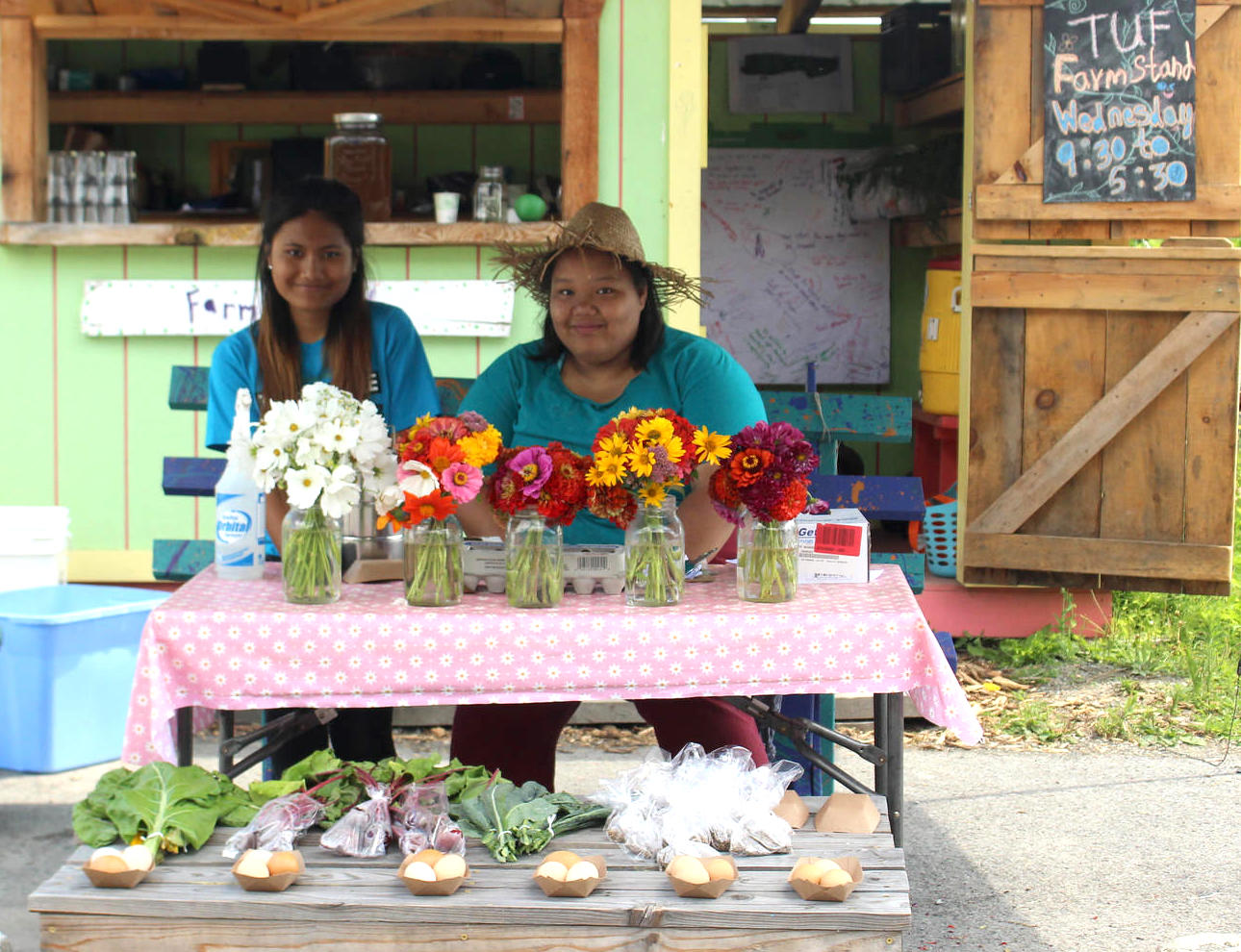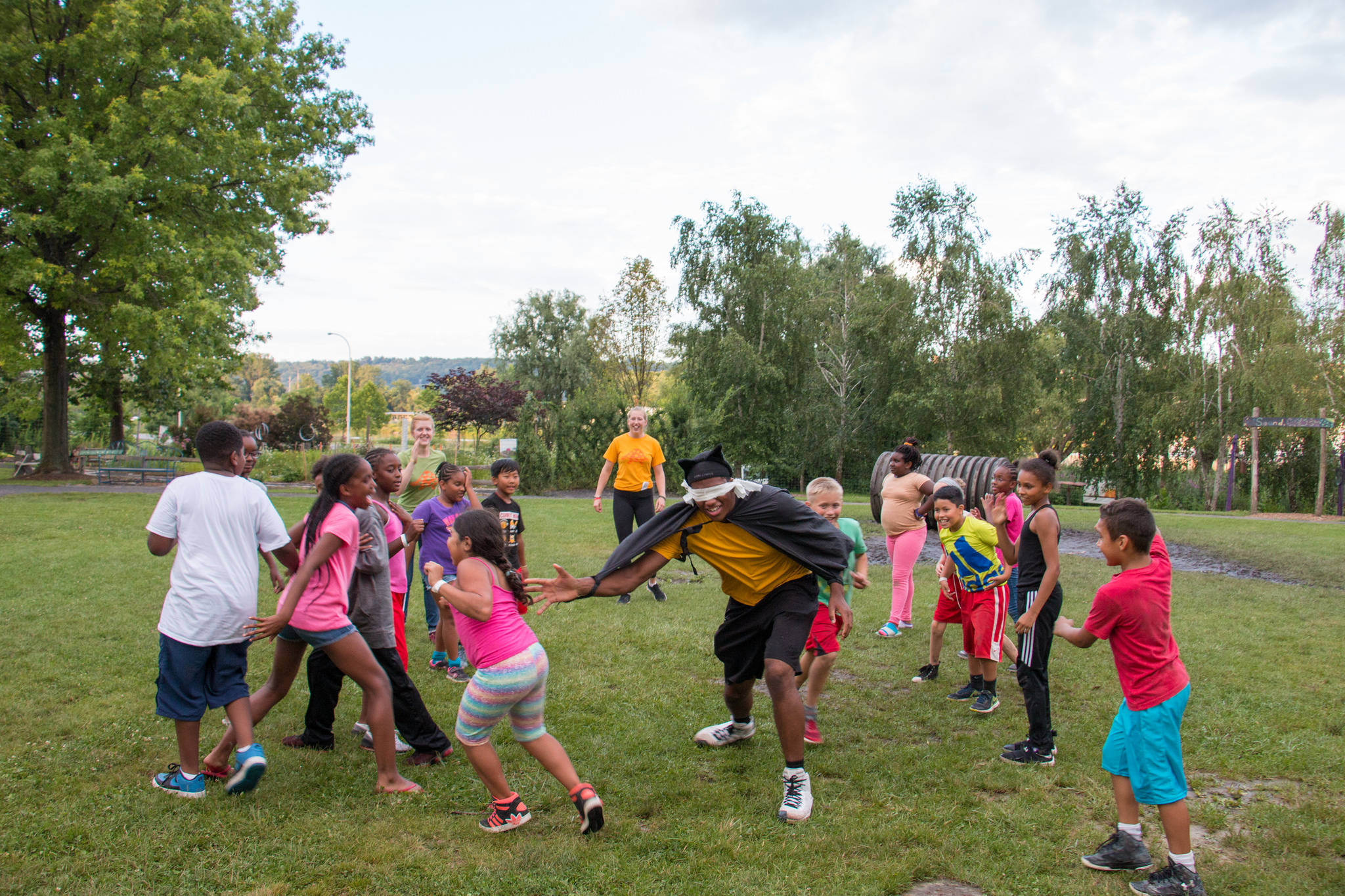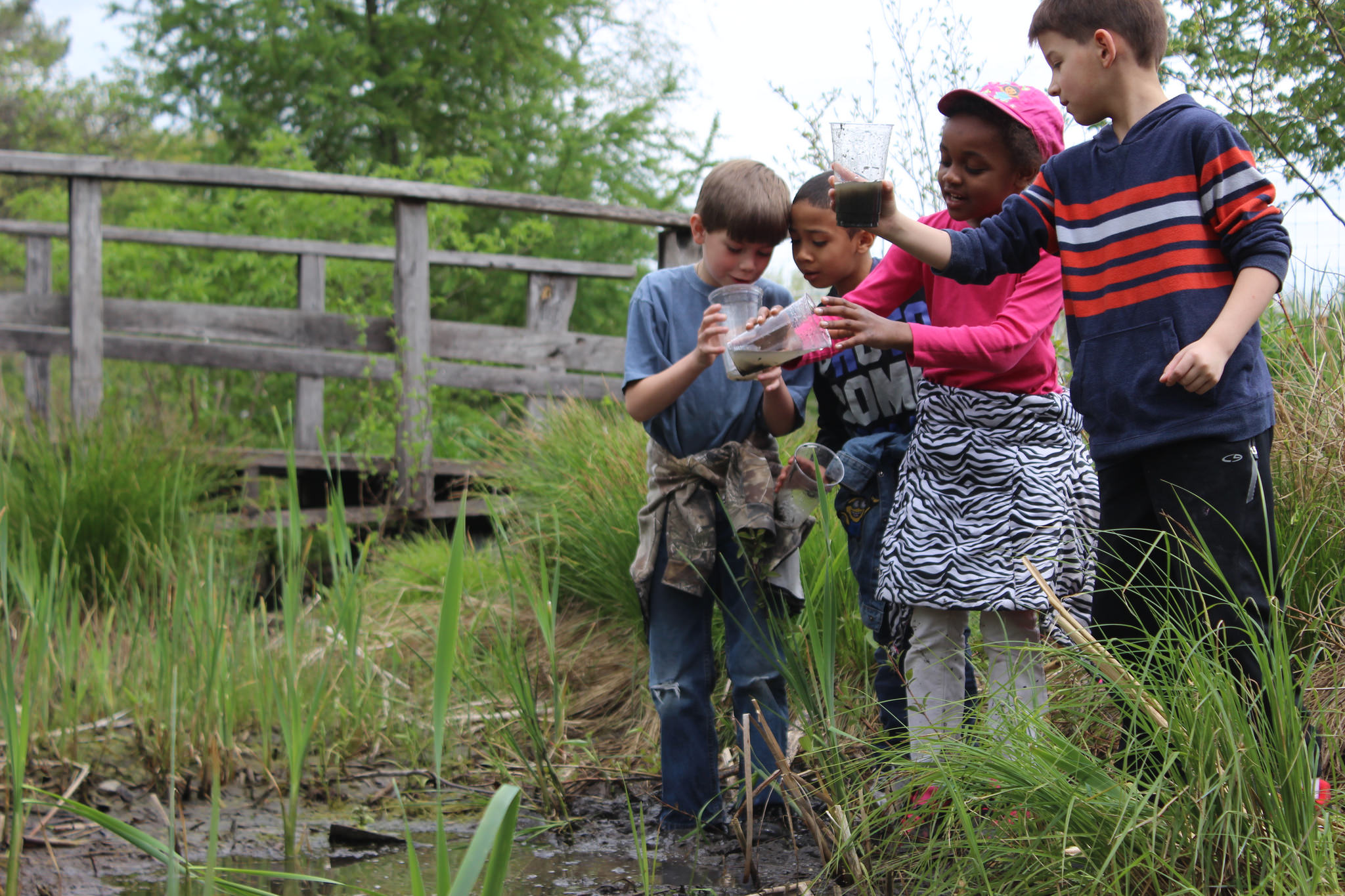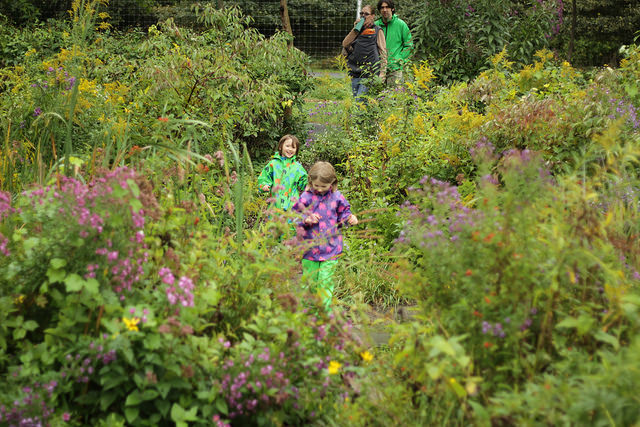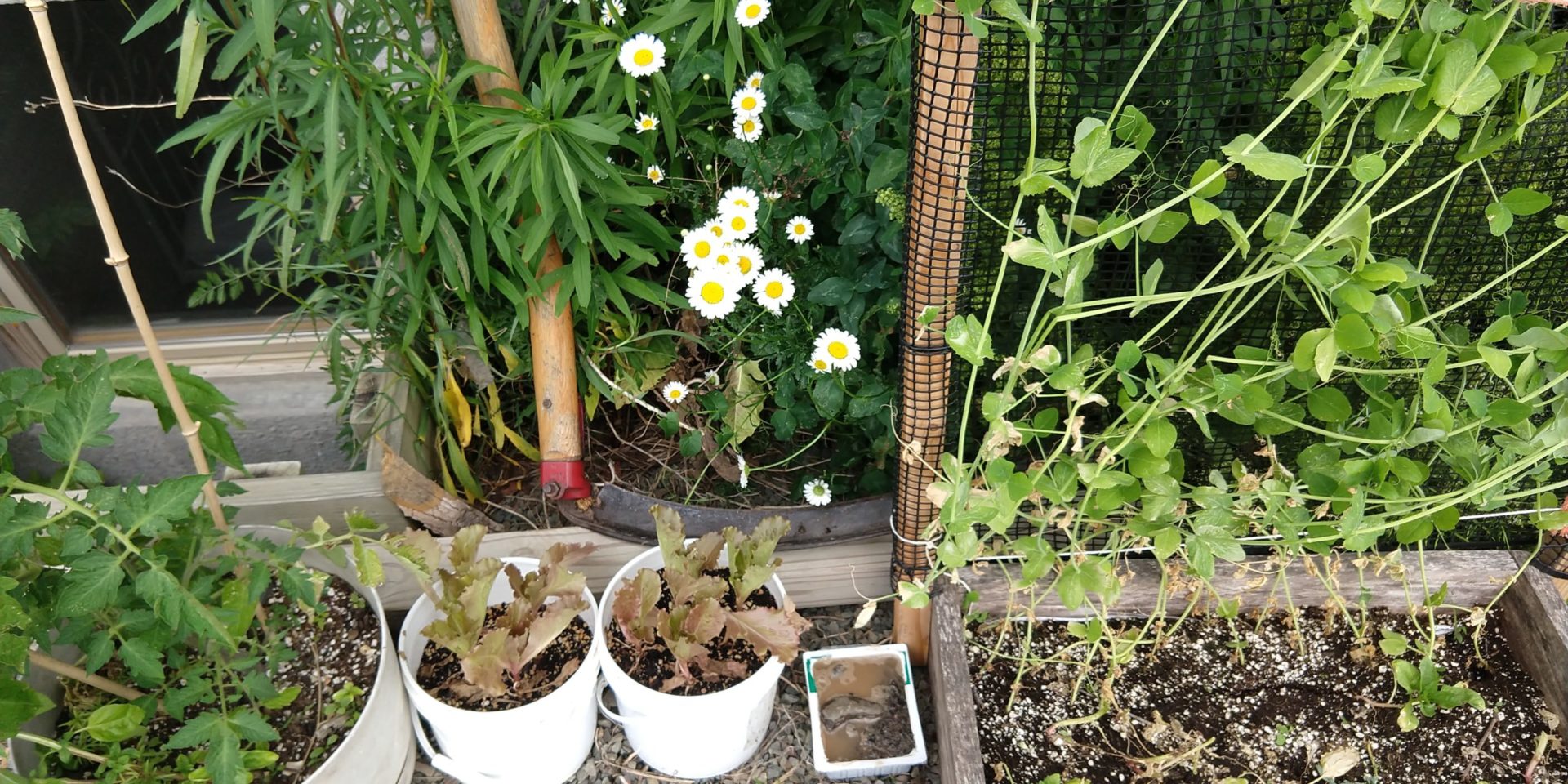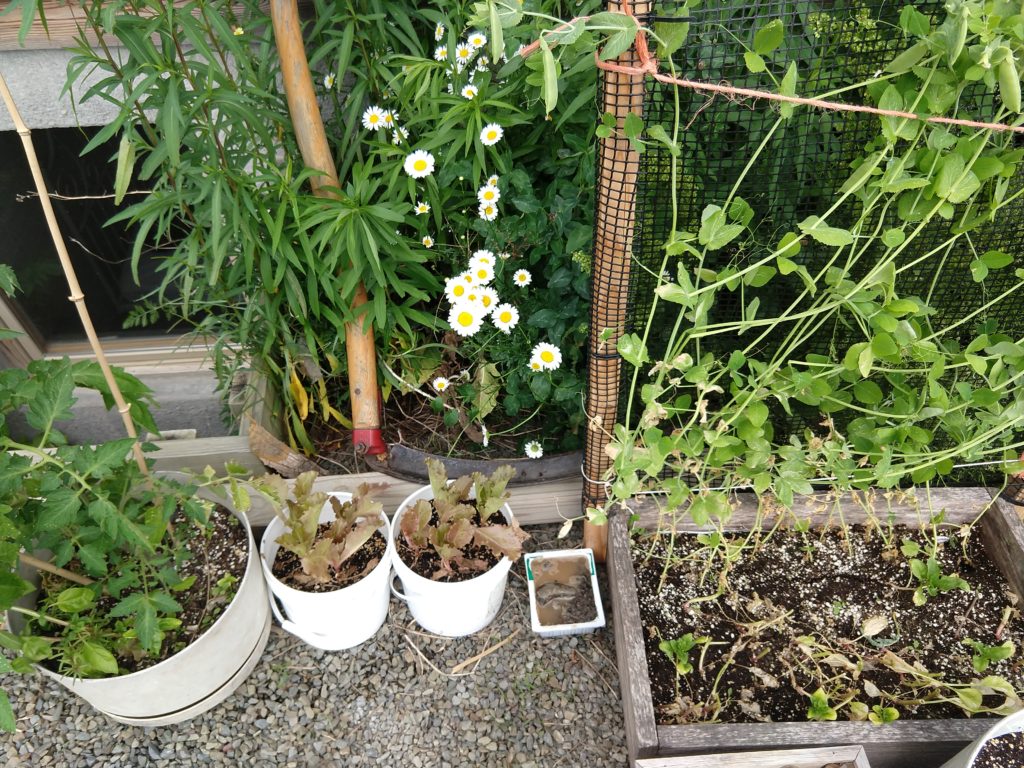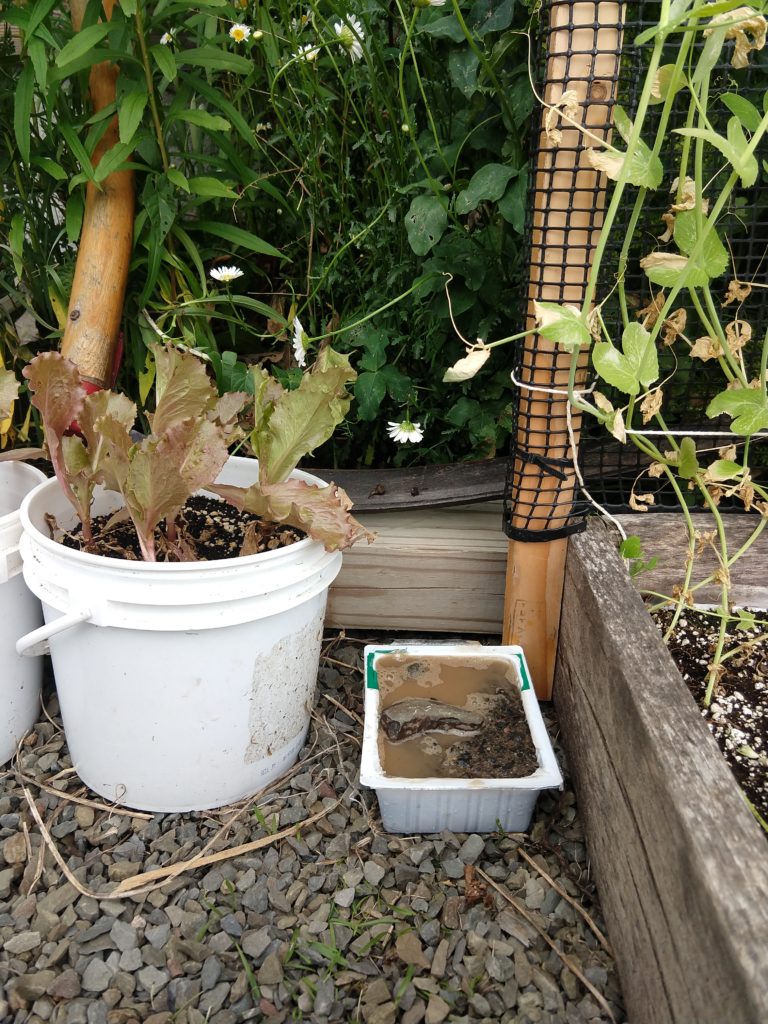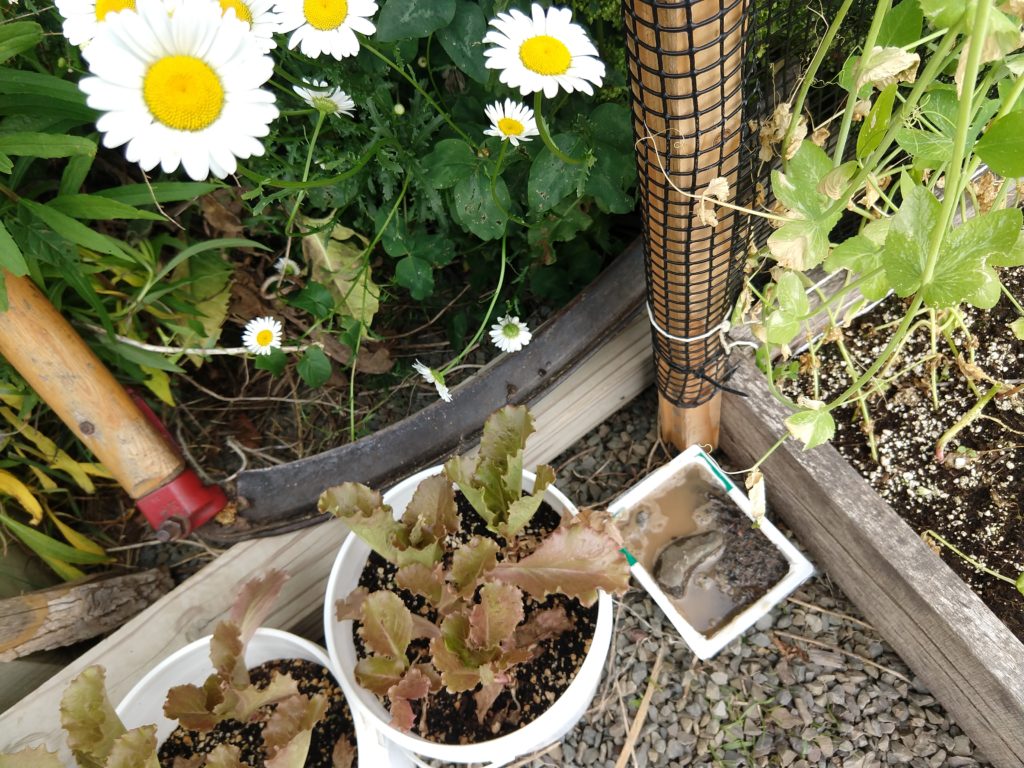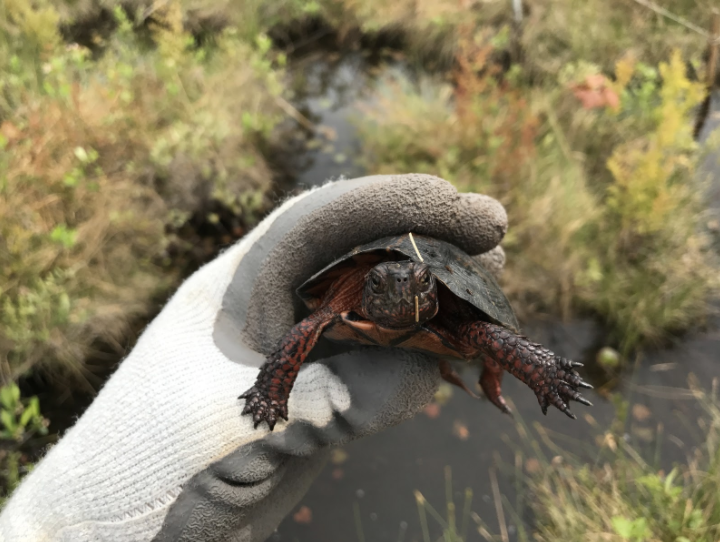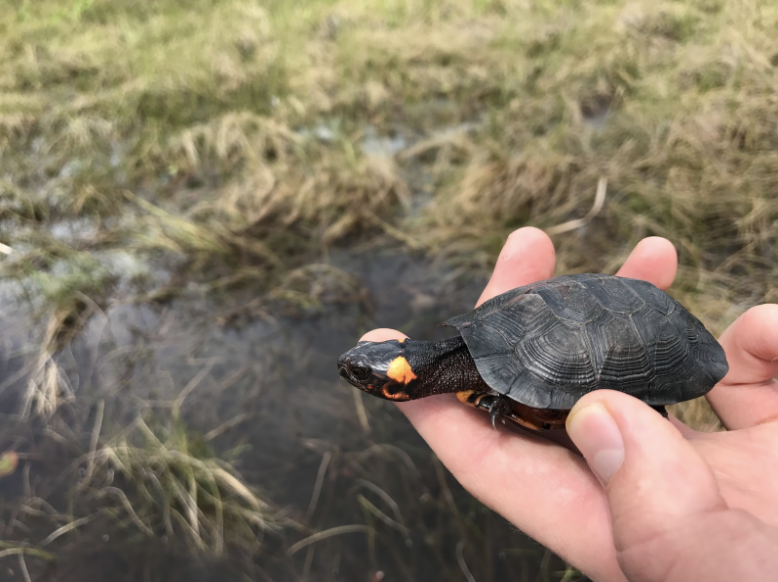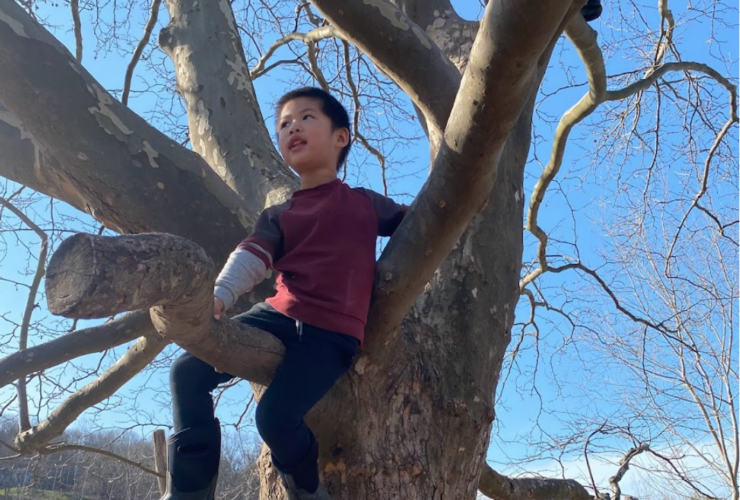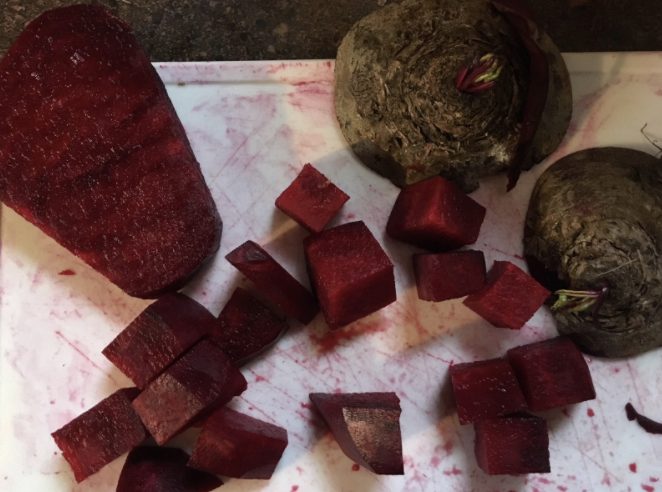Muddy Habitats
Lots of humans of all ages LOVE to play in mud. Did you know that there are lots of wild animals that NEED muddy places for their survival?
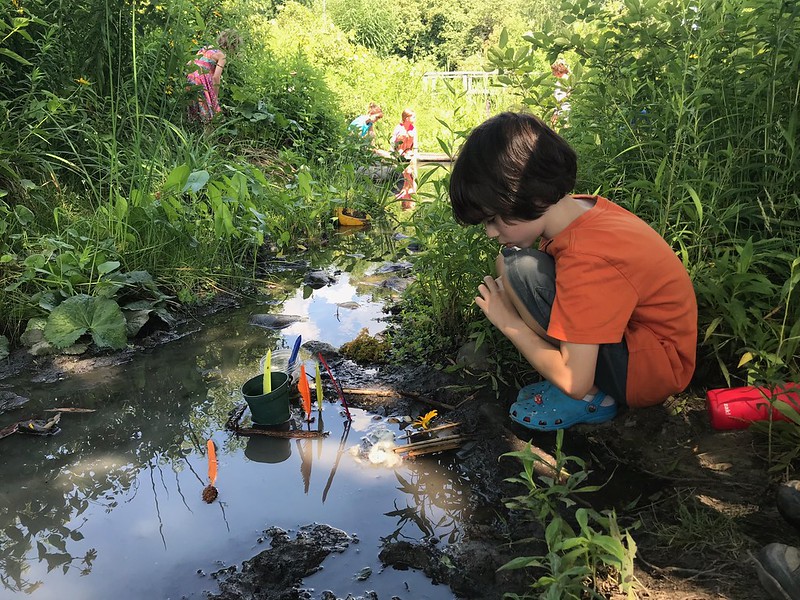
When you play at Ithaca Children’s Garden, you have probably splashed in the bioswale, the wet area between the birdhouse and Gaia’s sandbox that stretches all the way up toward the bridge by the troll house.
That wet area is home to LOTS of animals. Who have you observed here? I have seen many tadpoles, frogs, toads, ducks and lots of insects! You don’t need to have a huge wetland in your yard to help the animals (although that would be cool too!). Here’s a way to make some mud for wild creatures that may visit your yard.
- Find a shallow container- it can be anything recycled like a plastic take-out food lid, or an aluminum pie tin – really anything! It only has to be a few inches across and can be less than an inch deep (although smaller ones will need to be watered more often). I used a tofu container for mine – in the photo.
- Fill it with gravel, sand, or dirt, then saturate it with water until it makes puddles. (Make sure any soil mix you use does not contain chemicals that may harm pollinators)
- Add a few small stones (or marbles or corks or other items) so that the butterflies and bees can rest while they drink.
- Place your muddy habitat in a sunny spot near the flowering plants that butterflies and bees seem to enjoy visiting.
- Observe your muddy habitat often and keep it saturated (filled with water) so that the animals can rely on your muddy habitat to keep them healthy! (Add some sea salt mixed in with the water to replenish the male butterflies!)
With just a small, shallow muddy spot, you can help provide for:
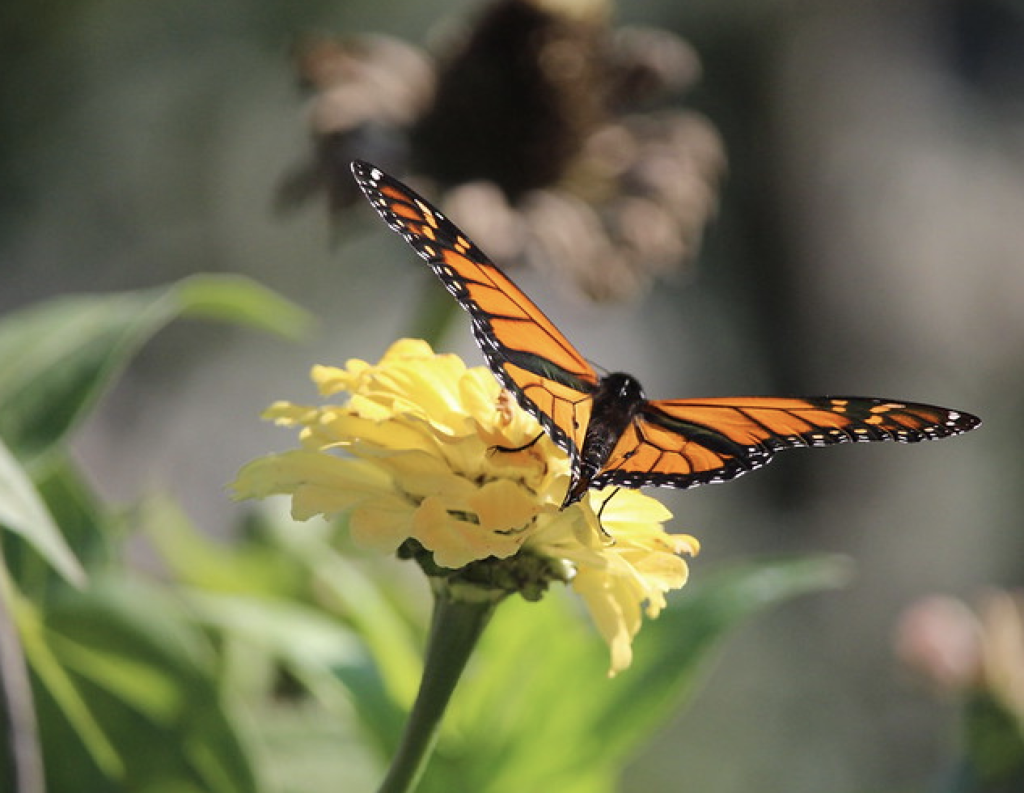
Butterflies use puddles to drink, but mostly to add nutrients like salt to their diet.
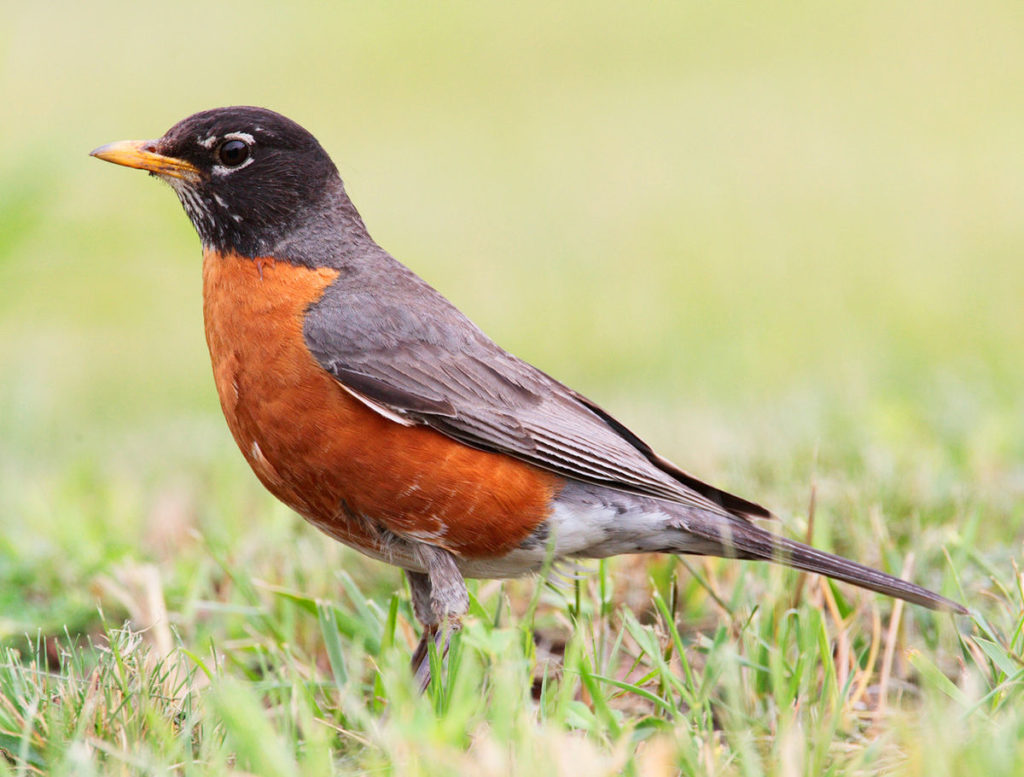
Some birds, like Robins, use mud to help their nests stick together.
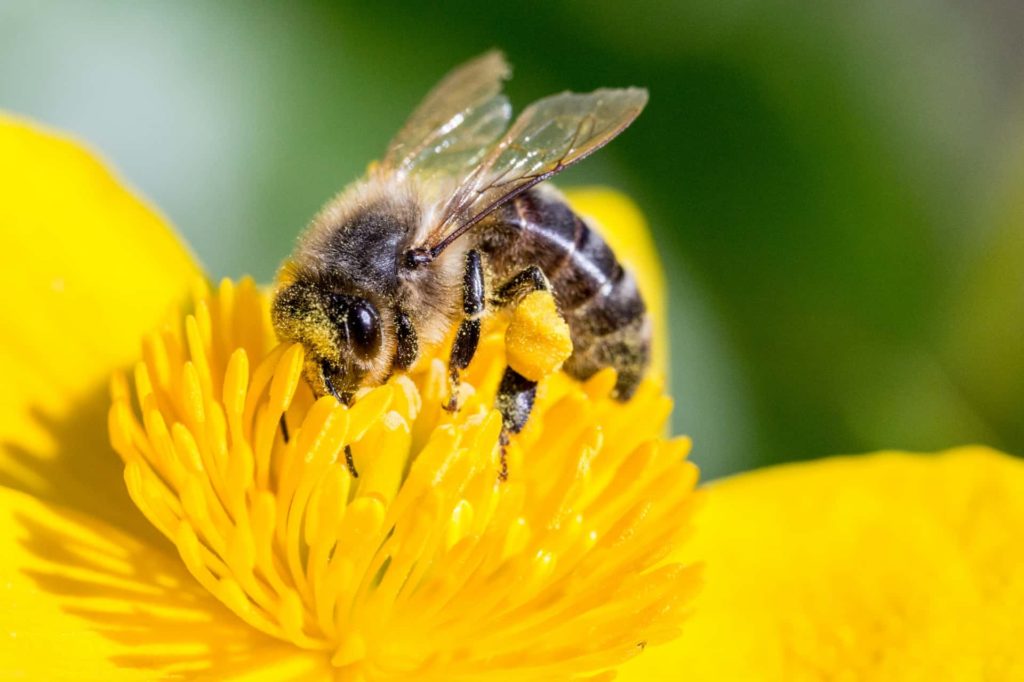
Bees use mud to build hives and fill the hollow tubes in which they lay eggs.
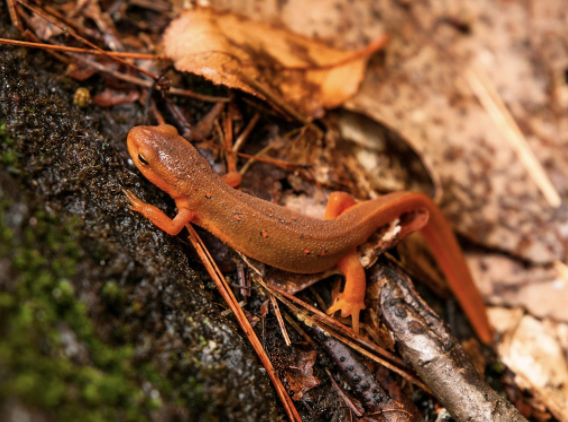
Amphibians, like toads and salamanders, might come to play too.
Let’s see who else might visit! Learn more about Muddy Habitats here.
A New York endangered species, the bog turtle, relies on wetlands, bogs, and wet meadows for habitat. The bog turtle is New York’s smallest turtle with a maximum length of just 4.5 inches! An opportunistic feeder, bog turtle’s can be found munching on slugs, worms, insects, seeds, and plant leaves.
If you are interested in building a backyard wetland/permanent muddy spot, see the following resources provided by the Natural Resource Conservation Service (NRCS) and the U.S. Fish and Wildlife Service.
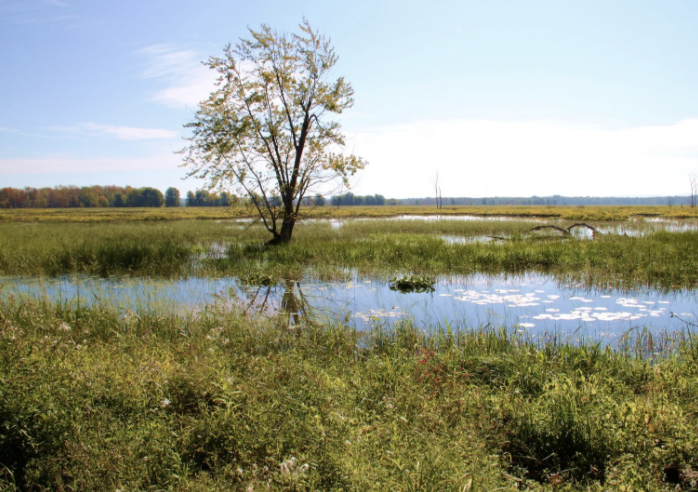
- Partners for Fish and Wildlife (PFW) is a voluntary program administered by the U.S. Fish and Wildlife Service to provide technical and financial assistance to private landowners to restore and enhance fish and wildlife habitat on their property, including wetlands!
- NRCS guide for building a backyard wetland.

